 W
WModern Scots comprises the varieties of Scots traditionally spoken in Lowland Scotland and parts of Ulster, from 1700.
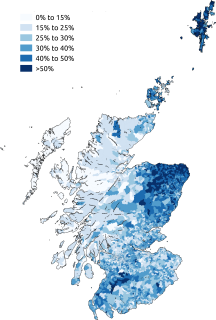 W
WScots is a West Germanic language variety spoken in Scotland and parts of Ulster in the north of Ireland. It is sometimes called Lowland Scots or Broad Scots to distinguish it from Scottish Gaelic, the Goidelic Celtic language that was historically restricted to most of the Highlands, the Hebrides and Galloway after the 16th century. Modern Scots is a sister language of Modern English, as the two diverged independently from the same source: Early Middle English (1150–1300).
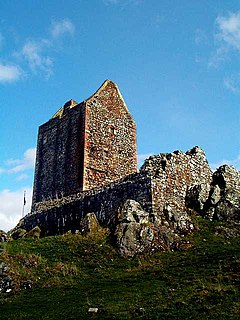 W
WBarmkin, also spelled barmekin or barnekin, is a Scots word which refers to a form of medieval and later defensive enclosure, typically found around smaller castles, tower houses, pele towers, and bastle houses in Scotland, and the north of England. It has been suggested that etymologically the word may be a corruption of the word barbican or berm. The barmkin would have contained ancillary buildings, and could be used to protect cattle during raids.
 W
WBastel, bastle, or bastille houses are a type of construction found along the Anglo-Scottish border, in the areas formerly plagued by border reivers. They are fortified farmhouses, characterised by security measures against raids. Their name is said to derive from the French word "bastille".
 W
WA bawbee was a Scottish sixpence. The word means a debased copper coin, valued at six pence Scots, issued from the reign of James V of Scotland to the reign of William II of Scotland. They were hammered until 1677, when they were produced upon screw presses.
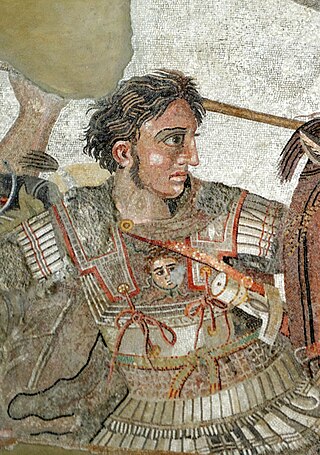 W
WThe Buik of Alexander is a short title for the two known Scots versions of the Alexander romance stories — a genre which was common in Medieval European literature, particularly France from the 12th century onwards, and the British Isles in the 14th and 15th centuries. A principal source text for these was the Old French text, Li romans d'Alixandre, attributed to Alexandre de Bernay, although writers tended to adapt material freely from different sources. Many different European nations had poets who produced versions of the romance. The dating is unsure, but the earlier of the two Scottish versions was anonymous, and the second, in a version dated 1499?, is by Gilbert Hay.
 W
WIn local usage, a burn is a kind of watercourse. The term applies to a large stream or a small river. The word is used in Scotland and England and in parts of Ulster, Australia and New Zealand.
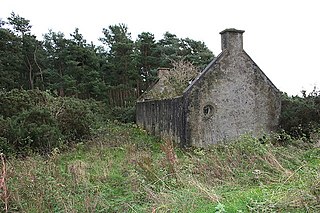 W
WBut and ben is an architectural style for a simple building, usually applied to a residence. The etymology is from the Scots term for a two-roomed cottage. The term describes a basic design of "outer room" conjoined with "inner room" as a residential building plan; the outer room, used as an antechamber or kitchen, is the but, while the inner room is the ben. The word but, here, comes from Early Scots/Middle English "bouten" "outside", and ben from ES/ME "binnen", "inside".
 W
WCampbeltown is a town and former royal burgh in Argyll and Bute, Scotland. It lies by Campbeltown Loch on the Kintyre peninsula. Originally known as Kinlochkilkerran, it was renamed in the 17th century as Campbell's Town after Archibald Campbell was granted the site in 1667. Campbeltown became an important centre for Scotch whisky, and a busy fishing port.
 W
WA clootie is a strip or piece of cloth, a rag or item of clothing; it can also refer to fabric used in the patching of clothes or the making of clootie mats.
 W
WCutty-sark is a nickname given to Nannie Dee, a fictional witch created by Robert Burns in his poem Tam o' Shanter, after the garment she wore. In the poem, the erotic sight of her dancing in such a short clothing caused the protagonist Tam to cry out "Weel done, Cutty-sark", which subsequently became a well-known catchphrase.
 W
WA Drunk Man Looks at the Thistle is a long poem by Hugh MacDiarmid written in Scots and published in 1926. It is composed as a form of monologue with influences from stream of consciousness genres of writing. A poem of extremes, it ranges between comic and serious modes and examines a wide range of cultural, sexual, political, scientific, existential, metaphysical and cosmic themes, ultimately unified through one consistent central thread, the poet's affectively charged contemplation, looking askance at the condition of Scotland. It also includes extended and complex responses to figures from European and Russian literature, in particular Dostoevsky and Nietzsche, as well as referencing topical events and personalities of the mid-1920s such as Isadora Duncan or the UK General Strike of 1926. It is one of the major modernist literary works of the 20th century.
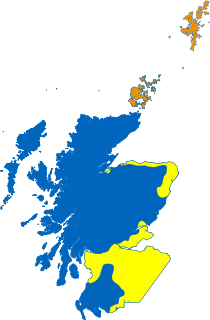 W
WEarly Scots was the emerging literary language of the Northern Middle English speaking parts of Scotland in the period before 1450. The northern forms of Middle English descended from Northumbrian Old English. During this period, speakers referred to the language as "English".
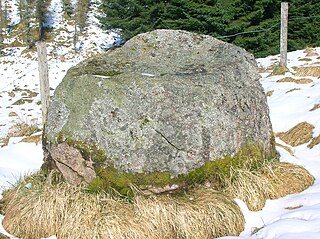 W
WThe name gowk stane has been applied to certain standing stones and glacial erratics in Scotland, often found in prominent geographical situations. Other spelling variants, such as gowke, gouk, gouke, goilk, goik, gok, goke, gook are found.
 W
WIn meteorology, haar or sea fret is a cold sea fog. It occurs most often on the east coast of Great Britain between April and September, when warm air passes over the cold North Sea. The term is also known as har, hare, harl, harr and hoar.
 W
WThe history of the Scots language refers to how Anglic varieties spoken in parts of Scotland developed into modern Scots.
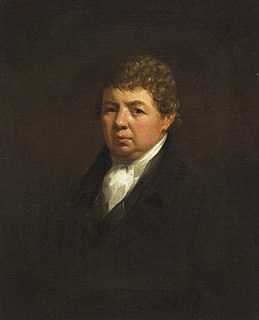 W
WJohn Jamieson was a Scottish minister of religion, lexicographer, philologist and antiquary. His most important work is the Dictionary of the Scottish Language.
 W
W"Jock Tamson's bairns" is a Lowland Scots dialect version of "Jack (John) Thomson's children" but both Jock and Tamson in this context take on the connotation of Everyman. The Dictionary of the Scots Language gives the following definitions:Jock: (1) A generic term for a man, a male person. (34) Jock Tamson's bairns: the human race, common humanity; also, with less universal force, a group of people united by a common sentiment, interest or purpose. Tamson: a Scottish form of the surname Thomson. In phrases Tamson stands for the ordinary representative man in the street: Jock Tamson's bairns, common humanity.
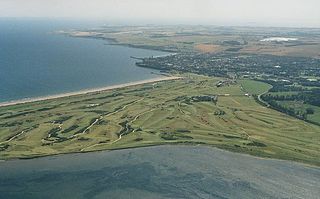 W
WA links is the oldest style of golf course, first developed in Scotland. The word "links" comes via the Scots language from the Old English word hlinc: "rising ground, ridge" and refers to an area of coastal sand dunes and sometimes to open parkland; it is cognate with lynchet. "Links" can be treated as singular even though it has an "s" at the end and occurs in place names that precede the development of golf, for example Lundin Links in Fife. It also retains this more general meaning in standard Scottish English. Links land is typically characterised by dunes, an undulating surface, and a sandy soil unsuitable for arable farming but which readily supports various indigenous browntop bent and red fescue grasses. Together, the soil and grasses result in the firm turf associated with links courses and the 'running' game. The hard surface typical of the links-style course allows balls to "run" out much farther than on softer turf course after a fairway landing. Often players will land the ball well before the green and allow it to run up onto the green rather than landing it on the green in the more targeted-landing style used on softer surfaces.
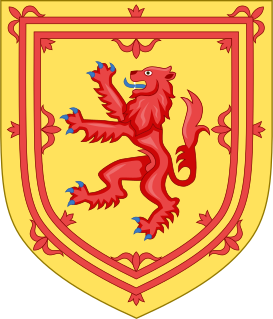 W
WA lord provost is the convenor of the local authority, the civic head and the lord-lieutenant of one of the principal cities of Scotland. The office is similar to that of a lord mayor. Only the cities of Aberdeen, Dundee, Edinburgh and Glasgow have a lord provost; other Scottish local authorities have provosts or convenors, which are similar offices to that of a mayor. Perth previously termed its civil leader a "lord provost", but from the Second World War onwards has preferred the simple term Provost of Perth.
 W
WThe Maitland Manuscripts are an important source for the Scots literature of the Fifteenth and Sixteenth Centuries. They contain texts of the work of the makars of the period and much material which is not attributed to any author.
 W
WA makar is a term from Scottish literature for a poet or bard, often thought of as a royal court poet.
 W
WMalinky is a Scottish folk band specialising in Scots song, formed in autumn 1998.
 W
WMurdoch Nisbet was a Scottish notary public in the diocese of Glasgow who created one of the earliest Bible translations into Scots. Living in the parish of Loudoun, Ayrshire, Nisbet's work as a notary public brought him into contact with local religious dissidents. He participated in a conventicle where he illicitly conducted readings of his translation. In 1539, Nisbet "digged and built a Vault in the Bottom of his own House" to hide his New Testament manuscript and conventicle activities.
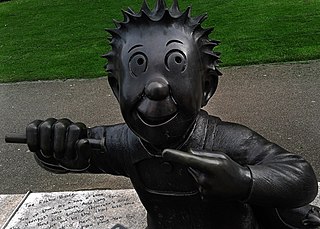 W
WOor Wullie is a Scottish comic strip published in the D.C. Thomson newspaper The Sunday Post. It features a character called Wullie; Wullie is the familiar Scots nickname for boys named William. His trademarks are spiky hair, dungarees and an upturned bucket, which he uses as a seat - most strips since early 1937 begin and end with a single panel of Wullie sitting on his bucket. The earliest strips, with little dialogue, ended with Wullie complaining. The artistic style settled down by 1940 and has changed little since. A frequent tagline reads, "Oor Wullie! Your Wullie! A'body's Wullie!".
 W
WA royal burgh was a type of Scottish burgh which had been founded by, or subsequently granted, a royal charter. Although abolished by law in 1975, the term is still used by many former royal burghs.
 W
WThe Royal Caledonian Curling Club (RCCC), branded as Scottish Curling is a curling club in Edinburgh, Scotland. It developed the first official rules for the sport, and is the governing body of curling in Scotland. The RCCC was founded on 25 July 1838 in Edinburgh, and granted its royal charter by Queen Victoria in 1843, after she had witnessed a demonstration of the sport played on the polished ballroom floor of Scone Palace the previous year.
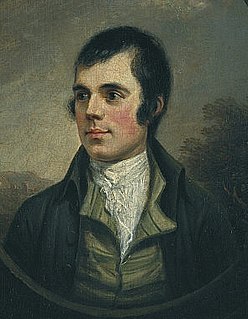 W
WScots-language literature is literature, including poetry, prose and drama, written in the Scots language in its many forms and derivatives. Middle Scots became the dominant language of Scotland in the late Middle Ages. The first surviving major text in Scots literature is John Barbour's Brus (1375). Some ballads may date back to the thirteenth century, but were not recorded until the eighteenth century. In the early fifteenth century Scots historical works included Andrew of Wyntoun's verse Orygynale Cronykil of Scotland and Blind Harry's The Wallace. Much Middle Scots literature was produced by makars, poets with links to the royal court, which included James I, who wrote the extended poem The Kingis Quair. Writers such as William Dunbar, Robert Henryson, Walter Kennedy and Gavin Douglas have been seen as creating a golden age in Scottish poetry. In the late fifteenth century, Scots prose also began to develop as a genre. The first complete surviving work is John Ireland's The Meroure of Wyssdome (1490). There were also prose translations of French books of chivalry that survive from the 1450s. The landmark work in the reign of James IV was Gavin Douglas's version of Virgil's Aeneid.
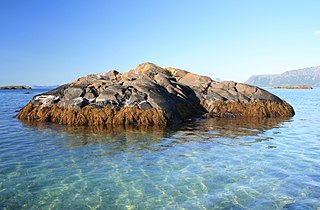 W
WA skerry is a small rocky island, or islet, usually too small for human habitation. It may simply be a rocky reef. A skerry can also be called a low sea stack.
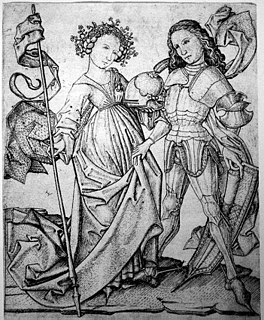 W
WThe Testament of Cresseid is a narrative poem of 616 lines in Middle Scots, written by the 15th-century Scottish makar Robert Henryson. It is his best known poem. It imagines a tragic fate for Cressida in the medieval story of Troilus and Criseyde which was left untold in Geoffrey Chaucer's version. Henryson's cogent psychological drama, in which he consciously resists and confronts the routine depiction of Cressida (Cresseid) as simply 'false', is one of the features that has given the poem enduring interest for modern readers and it is one of the most admired works of northern renaissance literature. A modern English translation by Seamus Heaney, which also included seven of Henryson's fables from The Morall Fabillis, was published in 2009.
 W
W"Wee Willie Winkie" is a Scottish nursery rhyme whose titular figure has become popular as a personification of sleep. The poem was written by William Miller and titled "Willie Winkie", first published in Whistle-binkie: Stories for the Fireside in 1841. It has a Roud Folk Song Index number of 13711.
 W
WThe Scots Wikipedia is the Scots-language edition of the free online encyclopedia, Wikipedia. It was established on 23 June 2005, and it first reached 1,000 articles in February 2006, and 5,000 articles in November 2010. As of November 2021, it has about 40,000 articles. The Scots Wikipedia is one of eight Wikipedias written in an Anglic language or English-based pidgin/creole, the others being the English Wikipedia, the Simple English Wikipedia, the Old English Wikipedia, the Pitkern-Norfuk Wikipedia, the Tok Pisin Wikipedia, the Jamaican Patois Wikipedia, and the Sranan Tongo Wikipedia.